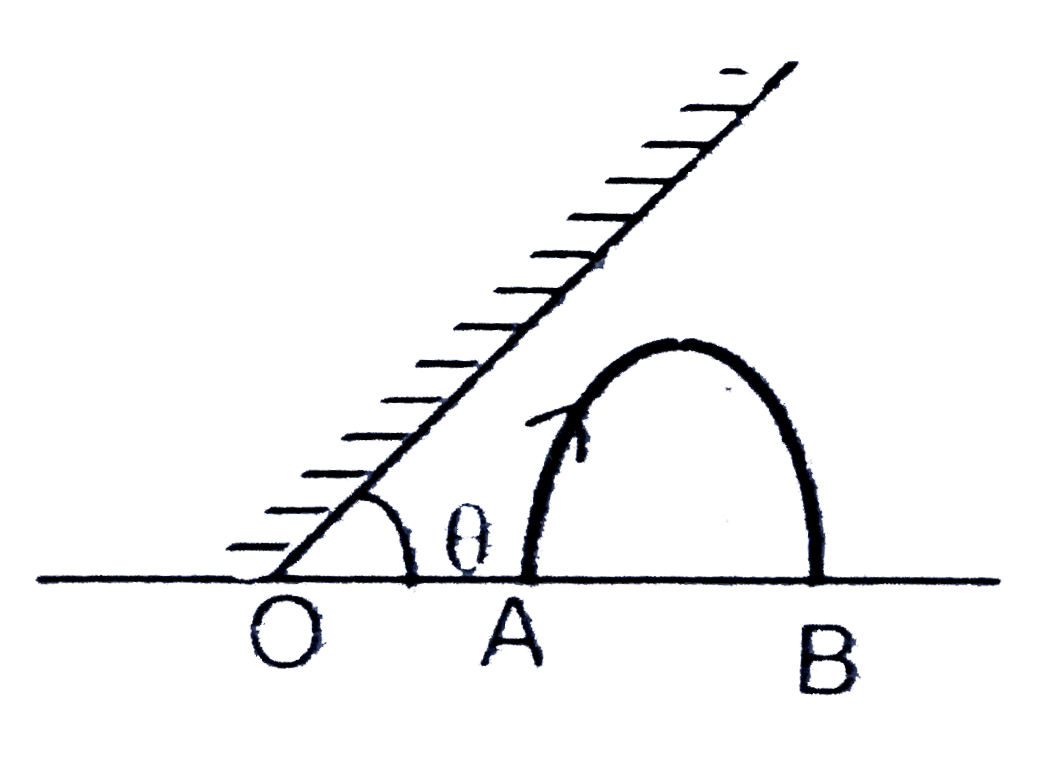A ball is thrown at a certain angle with the horizontal and it returns to the ground describing a parabolic path. Which of the following remains constant?
Momentum of the ball
Kinetic energy of the ball
Vertical component of the velocity
Horizontal component of the velocity
The correct Answer is:D
To solve the problem, we need to analyze the motion of the ball thrown at an angle with the horizontal. The key points to consider are the components of the velocity and how they change during the motion.
1. Understanding the Motion:
- When a ball is thrown at an angle (let's call it θ) with an initial velocity (v), it follows a parabolic trajectory due to the influence of gravity.
2. Breaking Down the Velocity:
- The initial velocity can be broken down into two components:
- Horizontal component: Vx=vcosθ
- Vertical component: Vy=vsinθ
3. Analyzing the Horizontal Motion:
- In the horizontal direction, there are no external forces acting on the ball (assuming air resistance is negligible). Therefore, the horizontal component of velocity Vx remains constant throughout the motion.
4. Analyzing the Vertical Motion:
- In the vertical direction, the ball is influenced by gravity. The vertical component of velocity Vy changes continuously due to gravitational acceleration (g). As the ball rises, Vy decreases until it reaches the peak, and then it increases again as the ball falls back down.
5. Considering Momentum:
- The momentum of the ball is given by p=m⋅v, where v is the total velocity. Since Vy changes, the total momentum will also change throughout the motion.
6. Considering Kinetic Energy:
- The kinetic energy of the ball is given by KE=12mv2. Since the total velocity v changes (because Vy changes), the kinetic energy will also change.
7. Conclusion:
- The only quantity that remains constant during the entire parabolic motion is the horizontal component of the velocity Vx.
Final Answer:
The horizontal component of the velocity Vx remains constant.
---
- When a ball is thrown at an angle (let's call it θ) with an initial velocity (v), it follows a parabolic trajectory due to the influence of gravity.
- The initial velocity can be broken down into two components:
- Horizontal component: Vx=vcosθ
- Vertical component: Vy=vsinθ
- In the horizontal direction, there are no external forces acting on the ball (assuming air resistance is negligible). Therefore, the horizontal component of velocity Vx remains constant throughout the motion.
- In the vertical direction, the ball is influenced by gravity. The vertical component of velocity Vy changes continuously due to gravitational acceleration (g). As the ball rises, Vy decreases until it reaches the peak, and then it increases again as the ball falls back down.
- The momentum of the ball is given by p=m⋅v, where v is the total velocity. Since Vy changes, the total momentum will also change throughout the motion.
- The kinetic energy of the ball is given by KE=12mv2. Since the total velocity v changes (because Vy changes), the kinetic energy will also change.
- The only quantity that remains constant during the entire parabolic motion is the horizontal component of the velocity Vx.
The horizontal component of the velocity Vx remains constant.
Topper's Solved these Questions
- KINEMATICS BOOK - MTG GUIDECHAPTER - KINEMATICS EXERCISE - Topicwise Practice Questions (UNIFORM CIRCULAR MOTION)
8 Videos
- KINEMATICS BOOK - MTG GUIDECHAPTER - KINEMATICS EXERCISE - CHECK YOUR NEET VITALS
22 Videos
- KINEMATICS BOOK - MTG GUIDECHAPTER - KINEMATICS EXERCISE - Topicwise Practice Questions (MOTION IN A PLANE )
23 Videos
- GRAVITATIONBOOK - MTG GUIDECHAPTER - GRAVITATIONEXERCISE - AIPMT/NEET MCQS
32 Videos
- LAWS OF MOTIONBOOK - MTG GUIDECHAPTER - LAWS OF MOTIONEXERCISE - AIPMT /NEET (MCQ)
24 Videos
Similar Questions
A ball is thrown upwards and returns to the ground describing praraboleic path. Which of the quantities remain constant throufgout the motion.
View SolutionA fielder in a cricket match throws ball from the boundary line to thhe wicket keeper. The ball describes a partabolic path. Which of the following quantities remain constant during the motion in air? (Neglecting air resistance)
View Solution
Knowledge Check
A ball is thrown upwards and returns to the ground describing a parabolic path. Which of the following quantities remains constant ?
AKinetic energy of the ballBThe speed of the ballCThe vertical component of velocityDThe horizontal component of velocityA ball is thrown at an angle θ with the horizontal and the range is maximum. The value of tanθ is:-
A1B√3C1√3D2A fielder in a cricket match throws ball from the boudnary line to the wicket keeper. The ball describes at parabolic path. Which of the following quantities remain constant during the motion in air? (Neglecting air resistance)
AKinetic energyBVertical component of velocityCHrizontal component of velocityDSpeed
For a body moving with constant speed in a horizontal circle , which of the following remains constant ?
View SolutionAn object is projected from A and reaches B on the same horizontal surface. A plane mirror inclined at an angle θ to the horizontal is placed on the ground as shown in the figure. Which of the following best describes the path of the image?

View SolutionA particle is thrown vertically upwards with a velocity v. It returns to the ground in time T. which of the following graphs correctly represents the motion ?
View SolutionA ball is thrown up with a certain velocity at angle θ to the horizontal. The kinetic energy varies with height h of the particle as:
View SolutionA ball is thrown up at an angle with the horizontal. Then the total change of momentum by the instant it returns to ground is
View Solution
